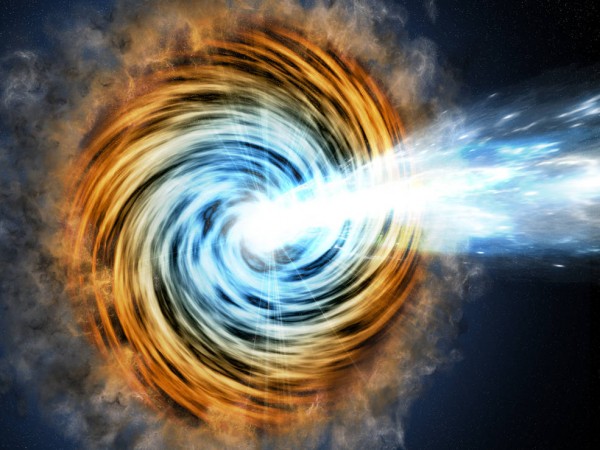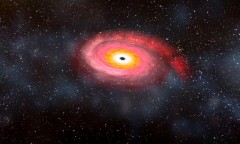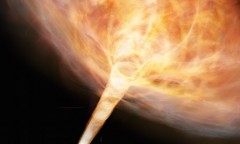By Ana Verayo, | February 05, 2017

Black-hole-powered galaxies called blazars are the most common sources detected by NASA's Fermi. (M. Weiss/CfA/NASA)
Astronomers have discovered the most extreme blazar yet, thanks to NASA's Fermi Gamma-ray Space Telescope. A blazar is classified as a distant galaxy that is detected by the energetic emissions of a supermassive black hole in its center.
This newly found blazar is the most distant one that has been imaged by the NASA's Fermi Gamma-ray Space Telescope. Apparently, it is so far that its light is traveling for 12.4 billion years which suggests that this distant galaxy is seen when it was just 1.4 billion years old.
Like Us on Facebook
According to Roopesh Ojha of NASA's Goddard Space Flight Center, despite being relatively young, some of the most gigantic black holes ever detected live within these far-flung blazars. Since blazars developed early on during the birth of the universe, these ancient, distant galaxies could reveal secrets about how supermassive black holes form, evolve and expand.
This extreme blazar radiation can be traced to a pair of particle jets that are emitted from the accretion disks surrounding supermassive black holes. These supermassive black holes are so colossal that they can contain around seven million suns.
This light radiation from the blazar hits Earth in full spectrum but its gamma rays, which are the highest energy emitting light source, are the ones detected by space telescopes like the Fermi Gamma. Gamma rays from blazar radiation do not arrive here in their original form, due to the distant journey. The rays become stretched throughout space due to the expanding universe.
This stretching property of the gamma rays' wavelengths is known as redshift. By measuring this, researchers can measure the distance of this traveling blazar light.
By analyzing the wavelengths if this blazar, scientists can estimate the universe's most distant supermassive black holes. Past Fermi Gamma observations revealed two supermassive black holes that could contain more than one billion solar masses.
According to Dario Gasparrini of the Italian Space Agency's Science Data Center, it is still a mystery how these supermassive black holes formed during the birth of the universe. Scientists are still trying to figure out the mechanisms that triggered such rapid development.
-
Use of Coronavirus Pandemic Drones Raises Privacy Concerns: Drones Spread Fear, Local Officials Say

-
Coronavirus Hampers The Delivery Of Lockheed Martin F-35 Stealth Fighters For 2020

-
Instagram Speeds Up Plans to Add Account Memorialization Feature Due to COVID-19 Deaths

-
NASA: Perseverance Plans to Bring 'Mars Rock' to Earth in 2031

-
600 Dead And 3,000 In The Hospital as Iranians Believed Drinking High-Concentrations of Alcohol Can Cure The Coronavirus

-
600 Dead And 3,000 In The Hospital as Iranians Believed Drinking High-Concentrations of Alcohol Can Cure The Coronavirus

-
COVID-19: Doctors, Nurses Use Virtual Reality to Learn New Skills in Treating Coronavirus Patients










